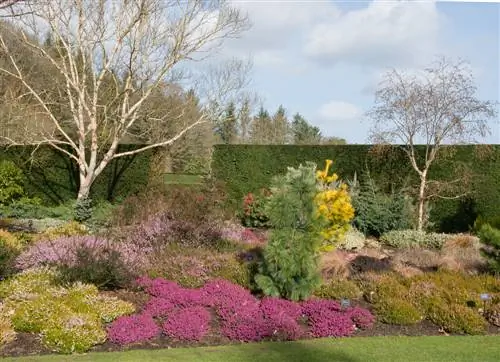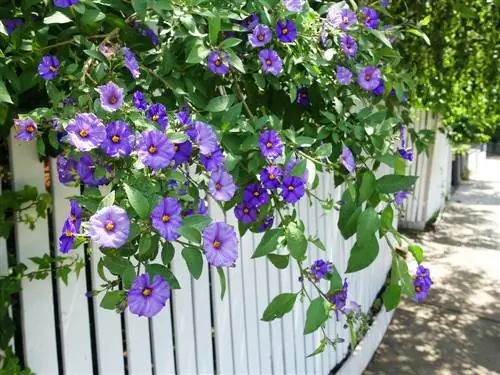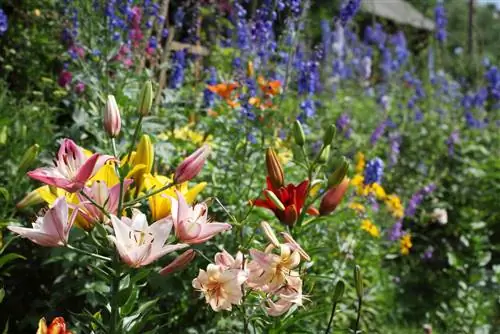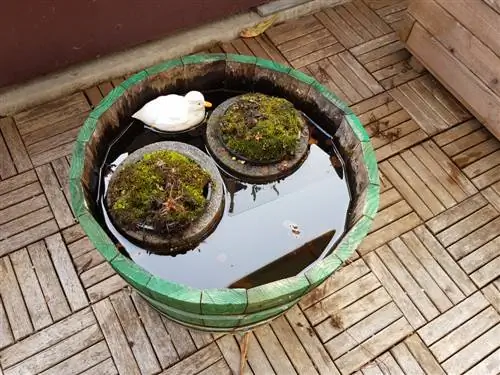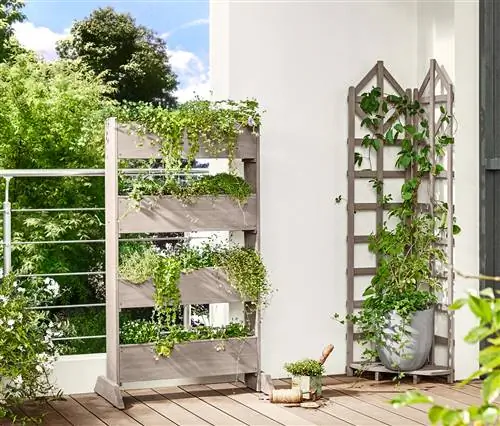- Author admin [email protected].
- Public 2023-12-16 16:46.
- Last modified 2025-06-01 06:02.
Bring the magic of blooming heath landscapes with their overwhelming colors into your garden. There are only a few criteria that need to be met in order to professionally create a private heather garden. This guide highlights the most important requirements and gives tips on the design plan.

How do I create a heather garden correctly?
To create a heather garden, choose a sunny location with sandy, loose soil and a pH value between 4 and 5. Combine different types of heather for a long flowering period and complement the garden with suitable plant partners, such as pines, rhododendrons and thyme. Decorative elements such as boulders and sand paths give the garden authenticity.
Heide requires special location qualities
All sunny locations that are open to the wind are predestined for heath gardens. A key function for the correct soil quality is the pH value. This should be between 4 and 5 so that heather plants can develop vitally and he althily. A sandy, loose, dry to fresh soil is particularly welcome for the undemanding Erika and Calluna.
Combine correctly for a long flowering period - tips for the planting plan
The dream of an ever-blooming heather garden is within reach if you skillfully combine the different types of heather and flowering times. The following tips for the planting plan show how it works:
- Winter and spring bloomers: snow heather (Erica carnea), English heather (Erica x darleyensis)
- Summer bloomers: Bell heather (Erica tetralix), Cornwall heather (Erica vagans), gray heather (Erica cinerea)
- Autumn bloomers with beautiful foliage color: Common heather (Calluna vulgaris) with the varieties Garden Girls, Boskoop and Dark Beauty
In your small garden you don't have to do without a picturesque heather bed. Small varieties are useful here, such as a purple heather dwarf (Calluna vulgaris) or deep red ruby carpet (Erica carnea), which combine to form dense carpets of flowers.
Magnificent planting partners complete the heather garden
The imaginative planting plan is not limited to heather plants. Heather species form a harmonious neighborhood with small pines, junipers and dwarf rhododendrons. Premium candidates for a decorative tete-a-tete are also colorful cranberry bushes, undemanding thyme and early-blooming bulb flowers such as crocuses, snowdrops and daffodils.
Decorative elements underline floral heather flair
Where extensive heathland landscapes with gentle hills and valleys stretch out, stylish decorative elements creatively loosen up the appearance. Sand paths exude authentic flair. Boulders from regional quarries serve as nature-loving eye-catchers. Tree trunks and roots provide visual variety and at the same time attract beneficial insects to your new heather garden.
Tip
Including heather in the design of a Japanese garden is not a breach of style. Rather, heather plants are among the few splashes of color that are accepted alongside evergreen classics such as bamboo or Korean fir. In addition, small heather species lie in style at the feet of the blooming beauties of the Japanese garden, such as azaleas and rhododendrons.

